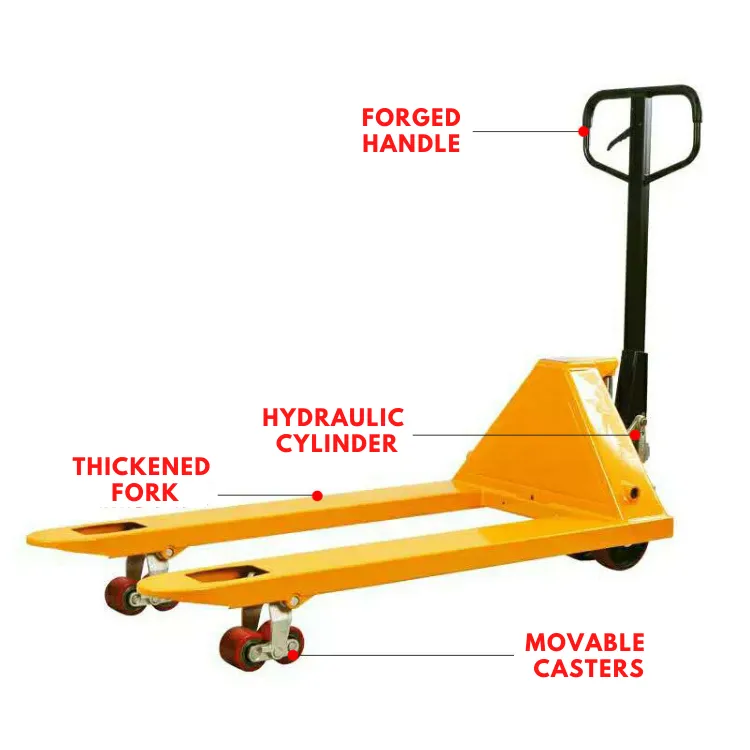Gantry Crane and Hoist Systems for Efficient Material Handling Solutions
The Essential Role of Gantry Cranes and Hoists in Modern Industry
Gantry cranes and hoists are pivotal components in the realm of material handling and industrial lifting operations. These machines are widely utilized across various sectors, including manufacturing, construction, shipping, and logistics, significantly enhancing productivity and safety in operations that require heavy lifting.
Understanding Gantry Cranes and Hoists
A gantry crane is a type of crane that consists of a structure supported by two or more legs that move on wheels or rails. This design allows the gantry crane to traverse a wide area, making it ideal for environments where heavy items or materials need to be relocated. The crane typically features a horizontal beam from which a hoisting mechanism is suspended. The hoist, on the other hand, is a device used for lifting or lowering a load by means of a drum or lift-wheel around which a rope or chain wraps.
Applications of Gantry Cranes and Hoists
The versatility of gantry cranes and hoists is showcased in a multitude of applications. In manufacturing plants, these machines facilitate the movement of heavy components, such as machinery parts and assemblies, directly from production lines to assembly areas. In construction, gantry cranes are employed to transport building materials like steel beams and concrete blocks, often over significant distances.
Shipping yards also benefit greatly from gantry cranes, which are used to load and unload containers from ships. The rapid movement of containers is crucial in maintaining efficiency in ports, and gantry cranes play a critical role in ensuring timely processing of shipments. Additionally, in warehouses and distribution centers, hoists are essential for moving products from high storage racks, allowing for optimized space usage and improved inventory management.
gantry crane and hoist

Advantages of Using Gantry Cranes and Hoists
One of the key advantages of gantry cranes and hoists is their ability to substantially improve operational efficiency. By mechanizing heavy lifting, these devices reduce the need for manual labor, which not only speeds up processes but also minimizes the risk of workplace injuries. Ergonomically designed hoists and cranes relieve workers from the strain of lifting heavy loads, thereby enhancing overall safety.
Moreover, gantry cranes are adaptable; they can be customized to meet specific lifting capacities and operational requirements. Some models are manufactured as portable units, allowing for mobility across different job sites. This flexibility enables companies to maximize their equipment investment and respond to varying project needs.
Safety Considerations
While gantry cranes and hoists contribute immensely to industrial safety, it is essential to adhere to proper operating procedures to mitigate risks. Training workers on the correct usage of these machines, conducting regular maintenance checks, and ensuring load limits are strictly observed are fundamental best practices. Safety features such as limit switches, emergency stop buttons, and proper signaling systems must be incorporated to enhance safe operations.
Conclusion
In conclusion, gantry cranes and hoists are integral to the landscape of modern industry. Their ability to lift and move heavy materials with efficiency and minimal risk highlights the importance of these machines in fostering a productive work environment. As industries continue to evolve and grow, the demand for sophisticated material handling solutions like gantry cranes and hoists will undoubtedly increase, driving further advancements in technology and safety standards. Such advancements will not only improve operational efficiencies but will also ensure that workplaces remain safe for all workers involved in lifting operations. The enduring relevance of these machines in various sectors underscores their critical role in supporting industrial growth and innovation.
-
Unlock Seamless Relocation with Our Heavy Equipment Moving ExpertiseNewsJun.06,2025
-
Unleash Unrivaled Flexibility with Our Adjustable Gantry CraneNewsJun.06,2025
-
Unleash Heavy-Duty Efficiency with Our Industrial Gantry Crane SolutionsNewsJun.06,2025
-
Revolutionize Steel Handling with Our Magnetic Lifter RangeNewsJun.06,2025
-
Master Equipment Mobility with Premium Machinery Mover SolutionsNewsJun.06,2025
-
Elevate Your Material Handling with Magnetic Lifter TechnologyNewsJun.06,2025
-
YS Permanent Lifting Magnets: The Smarter Way to Handle SteelNewsMay.22,2025
